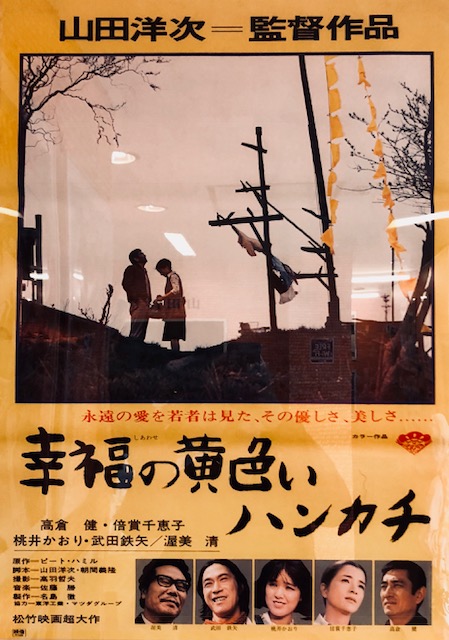201. The "Yellow" Radical: ťĽĄ
See how long you can contemplate the "yellow" radical ťĽĄ without hearing Coldplay's "Yellow" reverberating in your head!
This radical is on duty in just one Joyo kanji:
ťĽĄ (120: yellow)
Just as that kanji has the Joyo kun-yomi „Āć, the Japanese call the identical-looking radical „Āć. An alternative name is „Āć„ĀĄ„āć, corresponding to the term ťĽĄŤČ≤ (yellow).
The ťĽĄ shape serves as a mere component in ś®™ (235: side; across; dictatorial).
The Parent and Variant Shapes
The original shape of the 11-stroke ťĽĄ was ťĽÉ, which also has 11 strokes and has since become the variant of the character and radical. This variant pops up in some non-Joyo kanji, such as ťĽĆ (school). Enlarging that 25-stroke monstrosity should help:
ťĽĆ
I love how, despite all that's going on in this busy shape, it's perfectly symmetrical. Beneath the ŚÜĖ we can see the four-stroke shape that differentiates the variant from the Joyo radical. Here's what I mean:
ťĽĄ„ÄÄťĽÉ
Parent Variant
Photo Credit: Eve Kushner
If you found ťĽĆ hard to decipher, what's your take on this sign? Thank goodness for the romaji! The kanji turn out to be ťĽĄśüöŚ≠ź („Āć„āÜ„Āö: yellow yuzu), where the non-Joyo śüö means "yuzu." People usually render the name of this citrus fruit in hiragana, though śüöŚ≠ź or just śüö would also work. Yuzu can be yellow or green, so the ťĽĄ in this restaurant name narrows it down to yellow.
Etymologies
How does one represent yellow (or any other color) graphically? It's not easy! Here's what Henshall says in his newer edition about the etymology of ťĽĄ:
ťĽĄ (120: yellow)
Early forms "seem to depict a flaming arrow with what is probably a counterweight." Other primitive shapes show a standing person "wearing what is taken to be a jeweled belt." The color of that arrow or belt was used by extension to represent "yellow."
As for ś®™, there's nothing yellow about it etymologically. This again comes from Henshall:
ś®™ (235: side; across; dictatorial)
The character combines śú® (tree) with ťĽĄ, the latter phonetically conveying the associated sense "stop, obstruct." Originally, ś®™ represented a "horizontal door bolt," by extension coming to mean "crossways, side."
Is that Coldplay song stuck in your mind? You're welcome!

Photo Credit: Russell Hogg
At a Tokyo museum showcasing the work of director Yoji Yamada, this movie poster advertises a 1977 film that won awards in Japan:
„ÄĆŚĻłÁ¶Ź„ĀģťĽĄŤČ≤„ĀĄ„ÉŹ„É≥„āę„ÉĀ„Äć
The Yellow Handkerchief
ŚĻłÁ¶Ź („Āó„Āā„āŹ„Āõ: happiness)
Literally translating as The Yellow Handkerchief of Happiness but officially called The Yellow Handkerchief in English, the title starts with ŚĻłÁ¶Ź. That's typically read as „Āď„ĀÜ„ĀĶ„ĀŹ, and „Āó„Āā„āŹ„Āõ is mainly rendered as ŚĻł„Āõ, so it's ateji to connect ŚĻłÁ¶Ź with the yomi „Āó„Āā„āŹ„Āõ, as the furigana on the poster instruct us to do.
As for ťĽĄŤČ≤„ĀĄ („Āć„ĀĄ„āć„ĀĄ), that's "yellow" in an adjectival form, whereas ťĽĄŤČ≤ is a noun.
